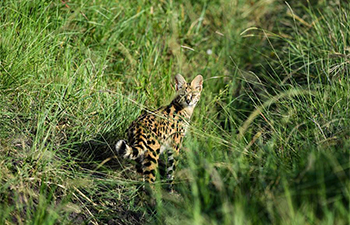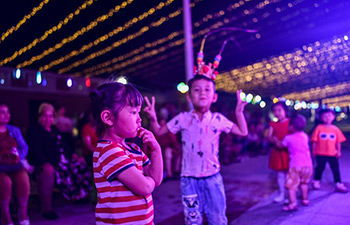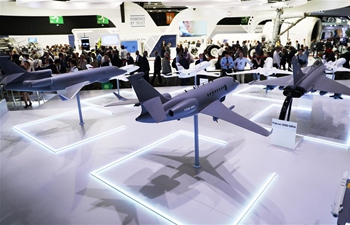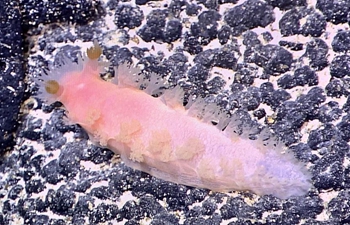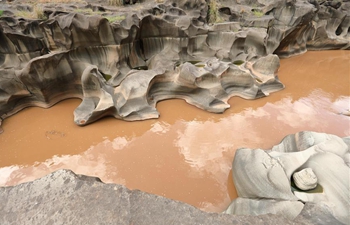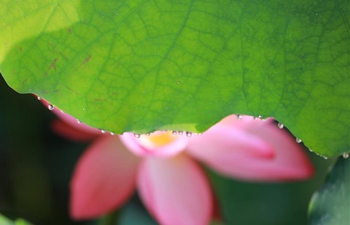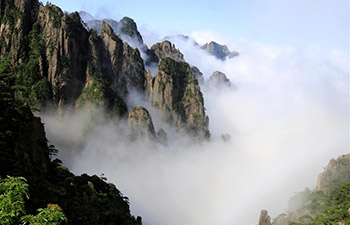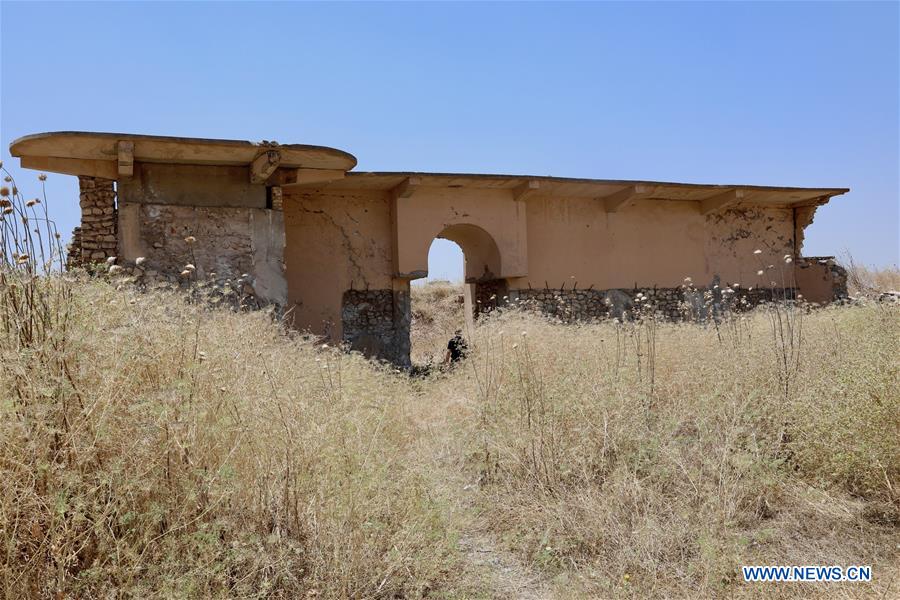
The photo taken on June 13, 2019 shows the destroyed gate of Ashurnasirpal Palace at archeological site of Nimrud, Iraq. Covered with thick layer of wild weeds, massive destruction of ancient palaces, temples and ziggurat left no signs for the Iraq's glorious archeological site of Nimrud after nearly three years of liberation from Islamic State (IS). (Xinhua)
NIMRUD, Iraq, June 19 (Xinhua) -- Covered with thick layer of wild weeds, massive destruction of ancient palaces, temples and ziggurat left no signs for the Iraq's glorious archeological site of Nimrud after nearly three years of liberation from Islamic State (IS).
"IS extremists destroyed Nimrud, which constituted one of the ugliest crimes in modern history," Saadi Ali, director of archeological site of Nimrud in Iraq's Nineveh governorate, told Xinhua.
Since Iraqi army liberated Nimrud and the surrounding areas in November 2016, no tangible efforts have been done to restore the archeological site, located some 30 km south of Nineveh's provincial capital Mosul.
Ali, 59, who heads a team of two more employees and 10 security members responsible for the security of the site, recalled the days when IS militants came to destroy the archeological site in 2015.
He said that IS militants brought bulldozers, hammers, shovel trucks and explosives.
At that time, Ali was worried about dozens of precious murals and artifacts inside the halls of royal ceremonies wing of the palace.
Ali's fears came true when the extremist militants blew up the palace halls with barrels filled with explosives.
"Everything was destroyed and the royal palace turned into a pile of wreckage and some important artifacts turned into small pieces," he said.
Now, the only visible thing at the site was a few meters of a wall that was used to support the famous winged bulls or lions alabaster statues, also known as Lamassu.
In the culture of ancient Mesopotamia, the fearsome beast of Lamassu represents supernatural spirits or serves as a protective deity which is often depicted as bulls or lions with a human head and eagle-wings that once protected cities in Mesopotamia.
There are also a few caravans scattered at the site for guards and a fence with barbed wires surrounding the destroyed site, as well as a warehouse for repairing some of the collected fragments of destroyed murals and artifacts.
All these things were implemented by the United Nations Educational, Scientific and Cultural Organization (UNESCO) through international funds and the U.S. Smithsonian Foundation.
Ali said that the most important part of the site is the palace built by Ashurnasirpal II who was the king of Assyria from 883 to 859 B.C.
The only almost intact alabaster mural still fixed on the wall at the entrance of the palace of the Assyrian king Ashurnasirpal II. Its role was to protect and replenish the Assyrian kingdom.
Currently, the remains of the destroyed Lamassus can be seen among dense weeds covered with blankets, waiting for future rebuilding.
The bombing pushed Irina Bokova, then director-general of UNESCO, to issue a statement to condemn the destruction of the site, saying that "the deliberate destruction of cultural heritage constitutes a war crime."
The extremist militants returned later in 2016, before the liberation of the area, to bulldoze the over 17-meter ziggurat to about 10 meters height by heavy machines, which was built about 2,900 years ago.
Amazingly, many engravings, ornaments and cuneiform writings on the fragments of the destroyed ancient walls remain clear despite passing of about 3,000 years.
Ali took part in writing an official report made by Nineveh provincial authorities, indicating that 90 percent of the ruin site of Nimrud was destroyed by IS group.
"What was discovered so far from the old Nimrud city since the beginning of excavations in mid-19th century is only 30 percent," Ali said.
"I wonder what the excavators will find if they work on the rest of 70 percent of the site. Wherever you dig, you will find something that could be a precious artifact," Ali added.
"This site is a cultural heritage to us and the world. It is a great loss for the whole world," the official said.
"I still have a hope that Nimrud archeological site will revive, but it is difficult and needs a long time. But this site will remain significant as it witnessed the civilizations of thousands of years," he noted.






